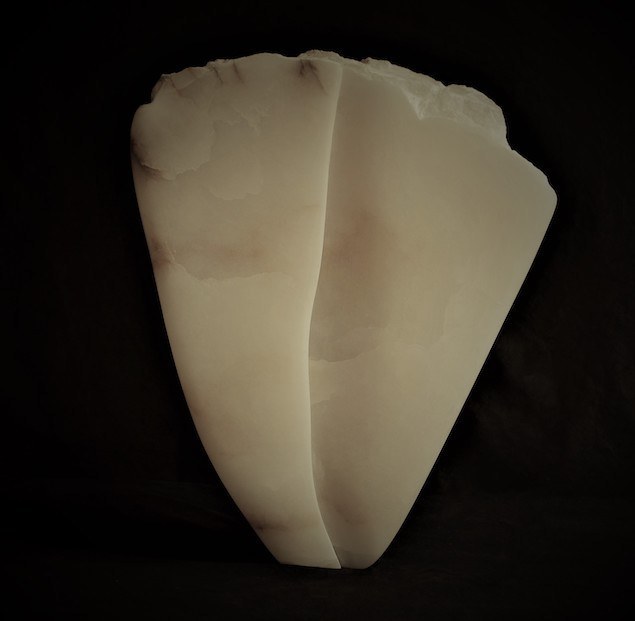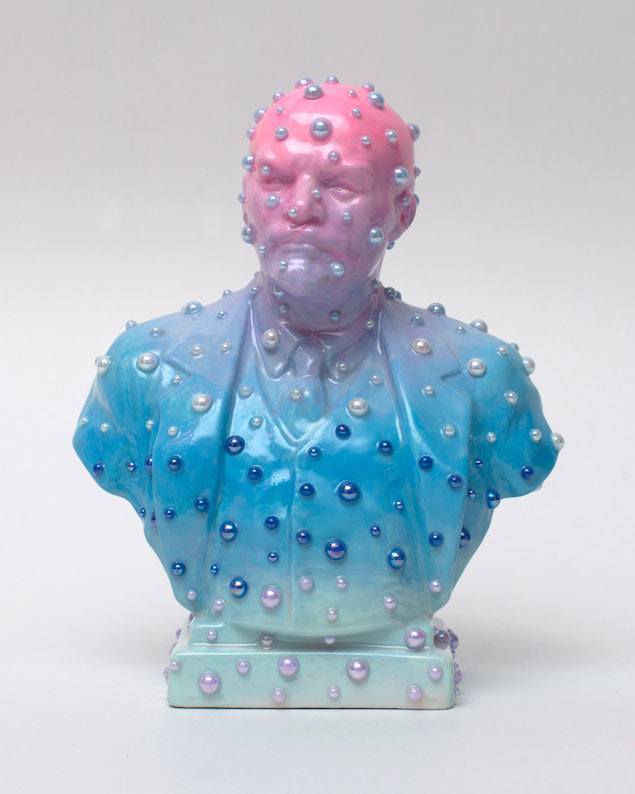We’ve put this guide together to introduce you to the medium of sculpture. If you’re looking for sculpture for sale, take a look at our collection here.
What is art sculpture?
In art, sculpture is a 3D form in which materials are worked, moulded, reduced, cast or assembled to create the final piece. Arguably one of the most celebrated and historic forms of art, sculpture is an ever-evolving artistic practice that has developed with time. There are a range of materials commonly used for art sculpture, including bronze, glass, ceramic and stone, making the shapes, structures and forms of sculpture endless. Thanks to the advancements in technology, increased accessibility and innovations of materials, art sculpture is as diverse as it is enduring.
Screaming for Marijuana (Gold), 2020, by Olga Lomaka
What material can be used for sculpture?
The use of bronze, marble and stone in sculpture dates back to Classical Greece and Rome, whilst wood carving was established as a popular practice in ancient Egypt. These materials have remained popular in sculpture due to their strength and appearances. Stone in particular has endured as it is resilient, strong and largely available. More recently, the scope of materials has extended to the likes of enamel, resin and paper.
David Rhys Jones in particular likes to use ceramics as a primary material for his sculptures, although he uses other conduits such as steel, copper, enamel, glass, and more. David Rhys Jones uses ceramics mostly when working with photographs, as it gives a shiny aspect to the end result that is particularly unique. This use of ceramics as a medium is particularly coherent to David Rhys Jones' want to instil a new meaning with his artworks; using ceramics to work with photographs gives a new lens to what was originally portrayed.
The Forefathers of History, 2014, by Willie Nash
What is the purpose of sculpture?
In Ancient Greece, the purpose of sculpture was to honour and pay tribute to the gods. Found near shrines, temples and religious sites, sculpture represented idealised visions of beauty through the figurative form. Sculpture also became a way of immortalising and elevating a person of power or significance.
Perseus, 2016, by Barry Davies
Religion remained a key driving force to sculpture during the Renaissance. Biblical figures were commonly commissioned by individuals or families to show their dedication to the church. Whether secular or religious, sculptures were a dominant means of demonstrating the patron’s wealth and stature.
Nowadays, sculpture is as popular for portraying a conceptual significance as it is for representing a physical likeness. Whether used to demonstrate strength or showcase skill, sculpture is one of the most versatile art forms today. Take a look at some of our contemporary selections, from Alexander Grigorev's conceptual approach, to Pak Keung Wan's intricate and intimate small-scale bronze figures.
January (The 12 Months), 2015, by Alexander Grigorev
What are the basic types of sculpture?
The four basic methods used to make sculptures are modelling, casting, assemblage and carving. These processes can be employed to create free-standing or relief sculptures. Relief sculptures are typically made from wood, wax or stone, which are created solely through carving, whereas free-standing sculptures can be formed through carving, moulding, casting or assemblage.
Carving involves the process of cutting, etching or scraping away from a solid mass of material. Essentially reducing it to the material into a desired form, the carving method is opposite to the act of modelling. Often sculptors will leave elements of the material untouched to gesture at the original look of the material, as demonstrated by Nicola Beattie with her sculpture Aeris II.
Aeris II, 2021, by Nicola Beattie
In contrast, modelled sculptures follow a process of building and adding, to form shape and detail. During their construction, and before cast or dried, modelled sculptures consist of a malleable medium, which gives sculptors the freedom to fashion, mould and adjust their work. The materials most often associated with modelled sculptures are plaster, wax and clay ceramics.
Unlike other methods, the possibilities of assembled sculptures are open-ended. Whether using mixed media, found objects or recycled scraps, assembled sculpture is the art of bringing together separate materials. Assemblage made a name for itself in the early twentieth century, when artists such as Picasso, Man Ray and Rauschenberg assembled sculptures from scrap materials. Assemblage is still frequently used today in contemporary sculpture and installation.
Pearl, 2020, by Oleksandr Balbyshev
The process of casting involves creating a shape out of a mould, then pouring a liquid material in to set and solidify. The moulds used in casting represent the negative space surrounding the sculpture in which molten material is poured. Metals such as bronze are often used in the casting process, as well as resin and glass. The level of detail, precision and texture in Holly Bennett's bronze animal sculptures is achieved through the casting process.
Horse I, 2001, by Holly Bennett







